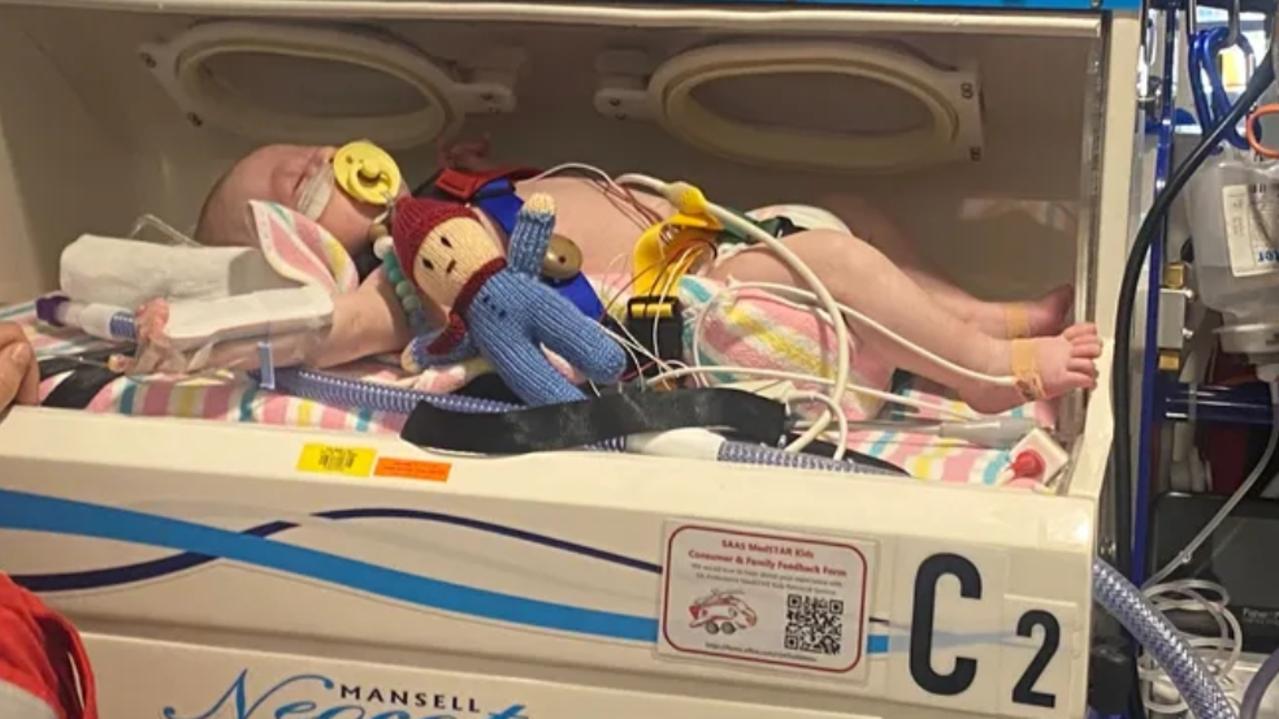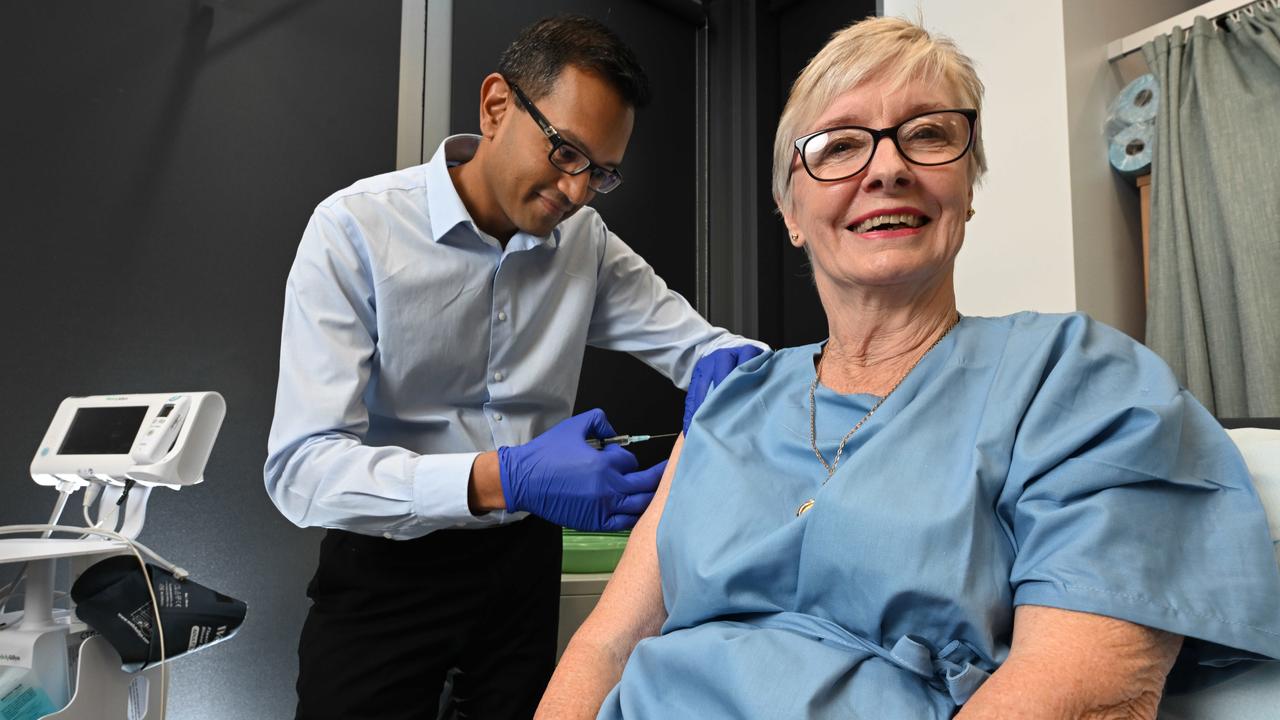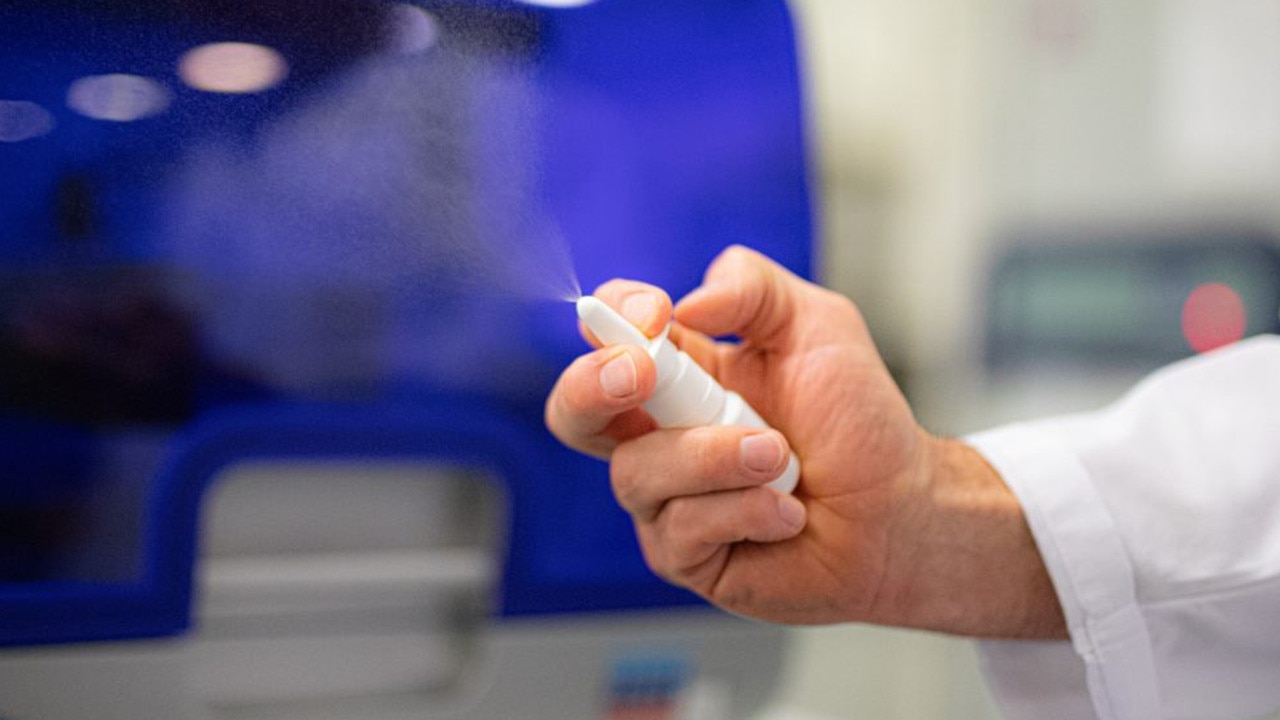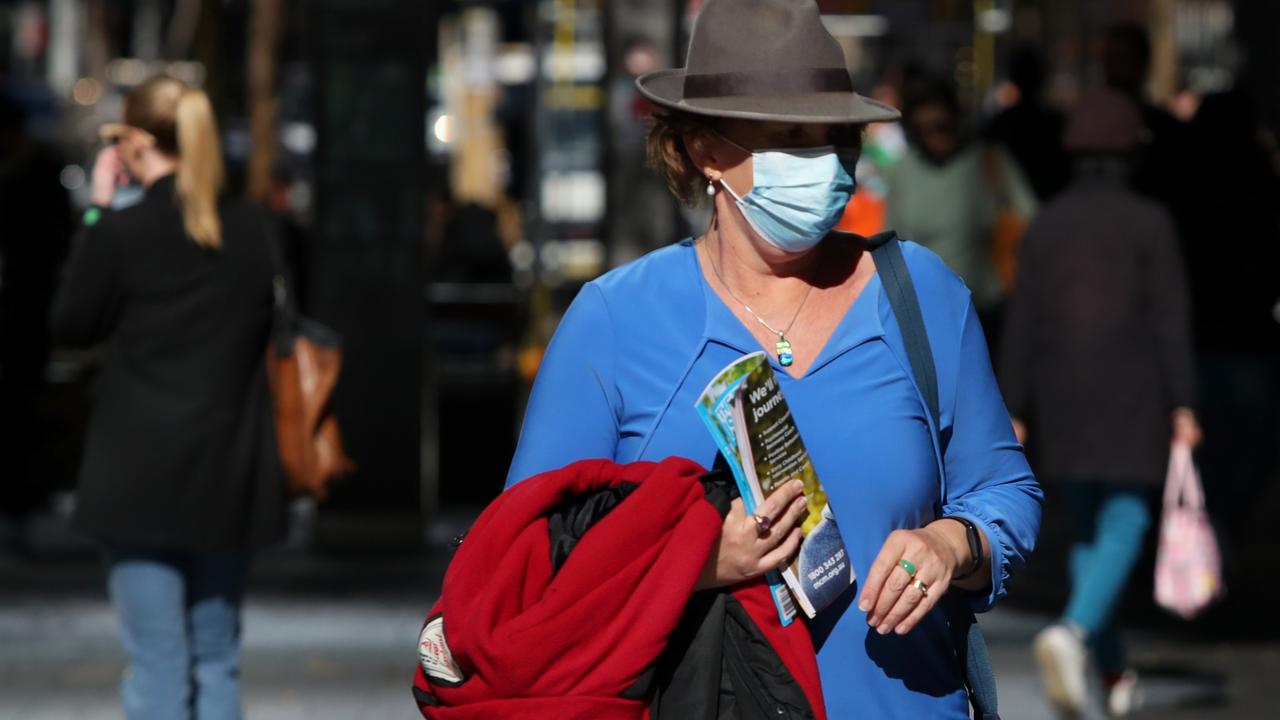WHO calls JN.1 Covid strain a ‘variant of interest’: How to avoid getting sick at Christmas
The World Health Organisation says a new Covid-19 variant will increase the burden of respiratory infections over coming weeks. Here’s how to avoid getting sick at Christmas.
The World Health Organisation has classified the Covid-19 variant JN.1, which expert say can evade the immune system and transmit more easily than other strains, as a “variant of interest”.
The WHO said based on current evidence, the global health risk posed by JN.1 remains low.
“Despite this, with the onset of winter in the northern hemisphere, JN.1 could increase the burden of respiratory infections in many countries,” the WHO said in a statement.
Current vaccines will continue to protect against severe disease and death from JN.1 and other circulating variants of the Covid-19 virus, the WHO said.
JN.1 was first detected in the United States in September, according to the US Centres for Disease Control and Prevention.
Last week, China detected seven infections of the Covid subvariant.
HOW TO AVOID GETTING SICK AT CHRISTMAS
Respiratory illnesses spreading across the globe have arrived in Australia in time for the holidays as international travel accelerates the transmission of new viruses.
RSV, human para-influenza, and swine flu have joined new strains of Covid, influenza and the common cold to create a contagion Christmas that threatens severe illness if untreated.
Australian cases of whooping cough (pertussis), which can cause serious illness and is particularly dangerous for babies, are also on the rise.
Influenza, Covid-19 and Respiratory syncytial Virus (RSV) are responsible for 15,000 hospitalisations and 1000 deaths per week in the US alone, according to Dr. Mandy Cohen, director of the US Centers for Disease Control and Prevention (CDC).
But while Covid is still the primary cause of respiratory illness and death, Dr Cohen added contracting one virus can open the door to complications from others and patients are increasingly being admitted to hospital with multiple infections.
As respiratory viruses spread more quickly during holiday season, the CDC is working with international health agencies to monitor shifts in respiratory illnesses in the US, China, Europe, and elsewhere.
The World Health Organisation has requested China provide more detailed information on a surge in respiratory illnesses in children including pneumonia.
In Adelaide, a three-month-old baby recently became the latest victim of a potentially deadly respiratory disease, Respiratory syncytial Virus (RSV), which is on the rise across South Australia.
Leo Phelps was treated at the Women’s and Children’s Hospital in Adelaide in October and his mum Chantel Phelps started a GoFundMe page for him.

“By some estimates, there are more than 200 viruses that cause the common cold and produce the symptoms mentioned of runny nose, cough or fever,” Dr Leana Wen told CNN.
“Most people do not need testing to figure out exactly which virus is causing their symptoms.”
However, she said that testing to establish which virus it is should be mandatory if you have been sick for sometime, if you are vulnerable to illness, or if you live with someone who is.
Here are the main viruses to be aware of, their symptoms, and how to avoid and treat them.
INFLUENZA OR FLU
In July 2023, a Queensland mother and her unborn baby both died within a month of each other after contracting the flu.
Business owner Lauren Maree Clanchy, 35, died from complications related to influenza A and pneumonia, after spending five weeks in hospital.

Influenza activity continues to increase in most of the US, according to the CDC, with the southeast and south-central areas of the country reporting the highest levels of activity. According to the World Health Organisation there are around a billion cases of seasonal influenza annually, including 3–5 million cases of severe illness. The flu causes 290,000 to 650,000 respiratory deaths annually.
Symptoms begin 1–4 days after infection and usually last around a week. They include:
Fever/chills
Cough
Sore throat
Runny or stuffy nose
Muscle or body aches
Headaches
Fatigue
Vomiting and diarrhoea (more common in children)
Flu vaccines are available worldwide. The composition of flu vaccines tends to be updated annually to account for new strains.
In Australia, the flu vaccine is available for free under the National Immunisation Program for people most at risk, including: children 6 months to less than 5 years, pregnant women, and people aged 65 and over.
COVID-19
In February, a Princess Cruises passenger ship that docked in Brisbane reported numerous Covid positive passengers on board, having just completed a trip to Indonesia, Papua New Guinea and the Pacific Islands.
Passengers on board the cruise first reported feeling unwell when the ship reached waters off far north Queensland and were isolated to their cabins.

It comes as Covid-19 hospitalisations in the US are climbing, according to the latest figures from the CDC, and numerous variants are circulating.
Over the seven days ending December 2, hospitalisations for coronavirus rose by about 3400 more than the total for the previous week. This uptick marked the fourth consecutive weekly increase.
Initial reports suggested two passengers had contracted the virus but by late Monday afternoon a spokeswoman for the company reported a “handful Covid cases” after gaining contact with the ship.
In the US, Covid-19 is still the main driver of viral respiratory deaths.
The CDC is tracking JN. 1, a closely related offshoot of the variant BA. 2.86. JN. 1 is currently projected to comprise 15-29 per cent of circulating variants and continues to grow. Currently, there is no evidence that JN. 1 presents an increased risk to public health compared to other currently circulating variants, however it may be more transmissible.
Symptoms include:
Fever or chills
Cough
Shortness of breath or difficulty breathing
Fatigue
Muscle or body aches
Headache
New loss of taste or smell
Sore throat
Congestion or runny nose
Nausea or vomiting
Diarrhoea
According to the CDC, current vaccines continue to work well against JN.1.

RSV
Respiratory syncytial virus, or RSV, is a common respiratory virus that usually causes mild, cold-like symptoms in adults.
In the US, RSV-associated hospitalisation rates remain elevated among young children and are increasing among older adults.
Three-month-old Adelaide baby Leo Phelps was diagnosed with RSV and a rhinovirus infection, with RSV on the rise in Australia. In South Australia since the start of 2023, there have been over 300 cases recorded each week.
Figures show that 10,808 people have been diagnosed with RSV this year in SA, compared with 5952 for the same time period for 2022.
According to the Mayo Clinic, signs and symptoms of RSV may include:
Fever
Severe cough
Wheezing
Rapid breathing or difficulty breathing
Bluish colour of the skin due to lack of oxygen
Most people recover in a week or two, but RSV can be serious and more severe for infants and older adults, who may need hospitalisation.
A vaccine for RSV should be available in Australia next year.
ADENOVIRUS
Adenoviruses are common viruses that typically cause cold or flu-like illness in people of all ages, at any time of year.
People with weakened immune systems, existing respiratory problems or cardiac disease may be at higher risk of developing severe illness from an adenovirus infection.
Symptoms may include:
Fever
Sore throat
Acute bronchitis
Pneumonia
Conjunctivitis
Gastroenteritis
Less common symptoms of adenovirus infection include:
Bladder inflammation or infection
Neurological disease (conditions in the brain and spinal cord)
Adenoviruses are usually spread from an infected person to others through close personal contact, such as touching or shaking hands, touching an object or surface with adenoviruses on it, then touching your mouth, nose, or eyes before washing your hands, and through respiratory droplets in the air caused by coughing and sneezing.
Some adenoviruses can spread through an infected person’s stool, for example, during diaper changing. Adenovirus can also spread through water, such as in swimming pools, but this is less common.
There is currently no adenovirus vaccine available to the general public.

RHINOVIRUS
Rhinoviruses are the most frequent cause of the common cold. In the US, children have an average of two rhinovirus infections each year, and adults have an average of one.
Rhinovirus infections range from mild to severe, and can cause severe illness, especially in people with weakened immune systems, asthma, or underlying medical conditions. Rhinoviruses are often present in children hospitalised for respiratory illness.
These viruses spread through droplets released when an infected person coughs or sneezes, or when a person touches a surface contaminated with the virus and then touches their eyes, nose, or mouth. Rhinoviruses can also be spread through close personal contact with an infected person, such as hugging, kissing, or shaking hands.
Symptoms may include:
Cough
Sneeze
Runny Nose
Nasal congestion
Sore throat
Headache
Body Aches
Fever
More severe symptoms and illness can include:
Asthma
Middle ear infections
Sinusitis
Bronchitis
Pneumonia
There is no vaccine or treatment for rhinoviruses aka the common cold.
Treatment is focused on symptomatic relief and prevention of complications such as rest, hydration, and chest and nasal decongestants.
PARA-INFLUENZA
Human para-influenza viruses (HPIVs) commonly cause upper and lower respiratory illnesses in infants, young children, older adults, and people with weakened immune systems, but anyone can get infected.
While patients can recover on their own, HPIVs can cause more severe illness, such as croup or pneumonia.
In adults, upper respiratory infections and bronchitis are the most common illnesses caused by HPIVs.
Symptoms generally appear 2 to 6 days after infection and can include:
Fever
Runny nose
Cough
Sneezing
Sore throat
Ear pain
Irritability
Decreased appetite
HPIVs can also cause more serious illness in children including croup, bronchitis, and pneumonia, with symptoms such as:
Barking cough
Hoarseness
Wheezing
Severe or prolonged symptoms should require medical attention.
Currently, there is no vaccine to protect you against infection caused by human para-influenza viruses HPIV.

PNEUMONIA
Pneumonia is an infection of the lungs that can cause mild to severe illness in people of all ages and backgrounds.
In June this year, a WA family were on a trip to Bali when mum Kristy Reyment contracted pneumonia, which led to respiratory failure and hospitalisation.
Recently, the CDC reported an uptick in cases of pediatric pneumonia in the US.
The diagnosis of pneumonia in children, along with other respiratory illnesses, increases every year during the fall and winter months in the US.
As of November 25, data indicated 2.4 per cent of children aged 2-4 years who were admitted to hospital had diagnosed pneumonia.
Symptoms include:
Cough, which may produce greenish, yellow or bloody mucus
Fever/Chills
Shortness of breath
Rapid, shallow breathing
Sharp or stabbing chest pain
Loss of appetite, low energy, and fatigue
Immunisations can prevent some types of pneumonia. To protect yourself against pneumococcal disease you can talk to your vaccination provider.
SWINE FLU
Swine influenza is a respiratory disease caused by type A influenza viruses that regularly cause outbreaks of influenza in pigs.
Like human influenza viruses, there are different subtypes and strains of swine influenza viruses.
The main swine flu circulating in US pigs in recent years have been three variant viruses: H1N1 influenza virus, trH3N2 virus, and trH1N2 virus.
In August the CDC reported two US human infections with flu viruses from pigs in two people who attended different agricultural fairs in Michigan and had exposure to pigs.
Usually, human infections with variant viruses occur in people exposed to infected pigs (e.g., children at an agricultural fair, pig farmers, or workers in the swine industry).
As with human contagion it is thought infection is transmitted when an infected pig coughs or sneezes and droplets with influenza virus spread through the air or land on surfaces. If these droplets land in your nose or mouth, or are inhaled or ingested, you can be infected.
Swine influenza has not been shown to be transmissible to people through eating properly handled and prepared pork (pig meat) or other products derived from pigs.
The H1N1 09 influenza vaccine was available for free in Australia from the end of September 2009 until 2010 when 3.9 million Australians got the jab.
WHOOPING COUGH (PERTUSSIS)
The number of confirmed pertussis cases in Australia is four times higher than this time last year, sparking fears of an outbreak,
Government data shows NSW has the highest number of reported pertussis case numbers (as of 14 December) with 766 cases, followed by Queensland (732 cases), Victoria (284), South Australia (121), Western Australia (57), the ACT (24), Tasmania (11) and the Northern Territory (3).
A disease of the respiratory tract, pertussis can cause serious illness in people of all ages but is most dangerous for babies, who are at risk of serious illness and death.
Vaccination is the best protection against the disease and all pregnant women should receive a booster, as well as close family members such as grandparents.
Symptoms may include:
A runny nose
Red and watery eyes
Sore throat and a slightly raised temperature
Intense coughing bouts, which may cause a ‘whoop’ sound.

WHAT YOU CAN DO TO PREVENT GETTING SICK
Nobody wants to go into full Covid lockdown mode, however, you can take sensible precautions to stop respiratory viruses from spoiling your holidays for you and your family.
While the symptoms and the severity of respiratory viruses may differ, the way most of them spread tends to be the same: either through infected droplets in the air or contaminated surfaces.
Stay away from others who are sick, if possible, as the closer you are to a sick person, the more droplets you may ingest.
If you have no control over your movement or your proximity to others, for example while you travel or use public transport, wearing a high-quality mask can help protect you and others.
Avoid touching your eyes, nose, and mouth especially in public places where germs spread.
Frequent handwashing with soap or using an alcohol based sanitiser removes most germs, including respiratory viruses, from your hands.
Viral particles in the air spread between people more easily indoors than outdoors so if possible choose to gather outside or open windows or use air purifiers to reduce the amount of virus you may be exposed to.
If you know you are sick, even if symptoms are mild, stay home to avoid putting others at risk. Avoid others in the household to lessen their risk. Cover coughs and sneezes when around others to help protect them.
If you have severe or worsening symptoms, call your healthcare provider.





